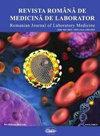The effect of Ulva rigida (C. Agardh, 1823) against cadmium-induced apoptosis and oxidative stress
IF 0.5
4区 医学
Q4 MEDICINE, RESEARCH & EXPERIMENTAL
引用次数: 0
Abstract
Abstract Cadmium (Cd) is known as a pollutant source in recent years with the increase in industrialization. Algae have secondary metabolites with high biological activity, used for pharmaceutical agents. The liver and kidney are the primary organs involved in the elimination of systemic cadmium and the main targets of cadmium toxicity. In the previous research, it was determined the ameliorative effects of the extract obtained from Ulva rigida in the liver tissue of rats induced by cadmium. 35 female Wistar rats between 225-240 g were used. The subjects were injected subcutaneously with 1 mg/kg cadmium chloride (CdCl2) four times a week for four weeks. The study was carried out by groups as control (G1), Cadmium group (1 mg/kg CdCl2-G2), Algae group (100 mg/kg-G3), Cd+algae group (1 mg/kg CdCl2+50 mg/kg algae extract-G4) and Cd+algae group (1 mg/kg CdCl2+100 mg/kg algae extract -G5). The subjects were sacrificed by cervical dislocation. Liver tissue and cardiac blood were collected. It was determined that oxidative stress with iNOS, inflammation and apoptosis with TNF-α increased with cadmium induction, while there was a statistically significant decrease in the groups that were given algae extract. In addition, biochemical changes in SOD, CAT and MDA values were found to be significant (p<0.05). As a result, it was determined that algae extract could play a protective role with its antioxidant and antiapoptotic properties in experimentally induced cadmium toxicity in rats.芦笋(C. Agardh, 1823)对镉诱导的细胞凋亡和氧化应激的影响
近年来,随着工业化程度的提高,镉(Cd)已成为公认的污染源。藻类具有次生代谢产物,具有较高的生物活性,可用于制药。肝脏和肾脏是参与全身镉清除的主要器官,也是镉中毒的主要目标。在前期的研究中,我们确定了刚玉提取物对镉诱导大鼠肝组织的改善作用。取225 ~ 240 g雌性Wistar大鼠35只。受试者皮下注射1 mg/kg氯化镉(CdCl2),每周4次,连续4周。试验分为对照组(G1)、镉组(1 mg/kg CdCl2- g2)、藻类组(100 mg/kg g3)、Cd+藻类组(1 mg/kg CdCl2+50 mg/kg藻类提取物- g4)和Cd+藻类组(1 mg/kg CdCl2+100 mg/kg藻类提取物-G5)。颈椎脱位处死受试者。采集肝组织和心脏血液。结果表明,镉诱导小鼠氧化应激(iNOS)、炎症和细胞凋亡(TNF-α)均升高,而藻类提取物组则明显降低。SOD、CAT、MDA值生化变化显著(p<0.05)。结果表明,海藻提取物具有抗氧化和抗凋亡的作用,对实验性镉中毒大鼠具有保护作用。
本文章由计算机程序翻译,如有差异,请以英文原文为准。
求助全文
约1分钟内获得全文
求助全文
来源期刊

Revista Romana De Medicina De Laborator
MEDICINE, RESEARCH & EXPERIMENTAL-
CiteScore
0.31
自引率
20.00%
发文量
43
审稿时长
>12 weeks
期刊介绍:
The aim of the journal is to publish new information that would lead to a better understanding of biological mechanisms of production of human diseases, their prevention and diagnosis as early as possible and to monitor therapy and the development of the health of patients
 求助内容:
求助内容: 应助结果提醒方式:
应助结果提醒方式:


